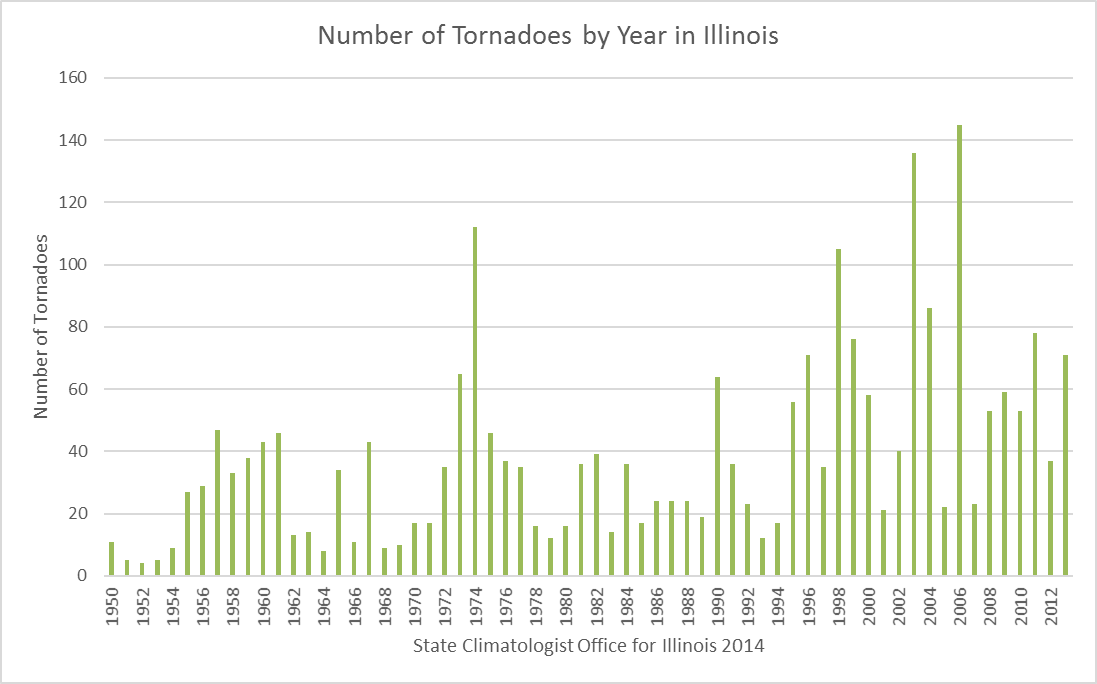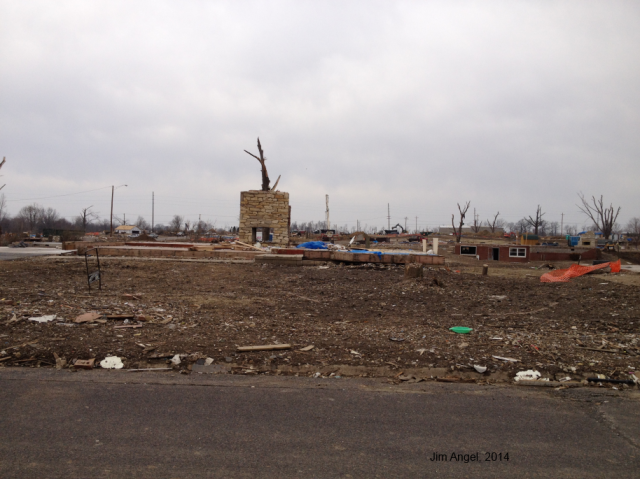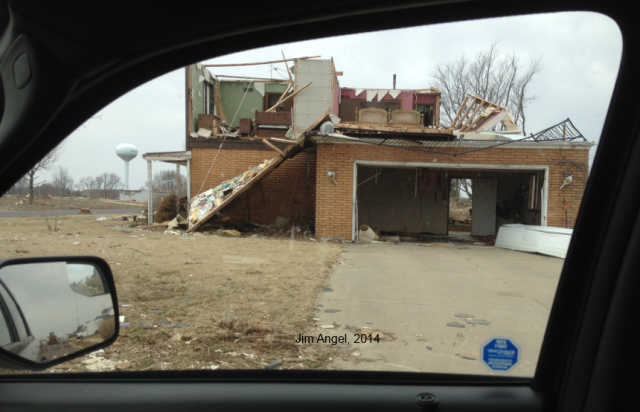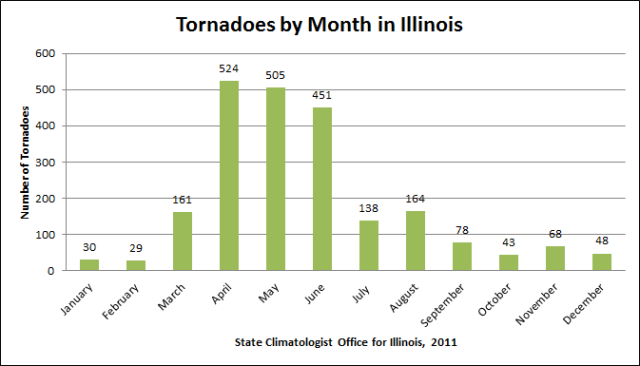 The tornado trends in Illinois has been updated to include data through 2013. The plots in order are the number of tornado reports by year, deaths by year, and injuries per year. Click to enlarge each plot.
The tornado trends in Illinois has been updated to include data through 2013. The plots in order are the number of tornado reports by year, deaths by year, and injuries per year. Click to enlarge each plot.
These plots are based on storm data at the National Climatic Data Center (NCDC). Tornado records are notorious for not being consistent over time. It is nobody’s fault – technology changes and reporting techniques have improved over time. The newer NWS Doppler radar systems were installed in the 1990s, the spotter networks continue to improve, and everyone has a cell phone with a camera. As a result, the number of tornadoes has increased in recent years with the better accounting.
In addition, there is always the potential for over-counting the number of tornadoes as they travel. For example, you might have a report for a tornado spotted 2 miles west of Smithville, and then another report 10 minutes later of a tornado north of Smithville. Was this the same tornado or two separate ones? Hard to tell without supporting evidence, especially before the modern-day radars.
I think the number of deaths and injuries by year in Illinois may actually be more reliable than the tornado frequency because they were just as widely reported in the media in the 1950s and 1960s as they are today. One can clearly see the spike in 1967 due to the Oak Lawn/Belvidere tornado outbreak and the 1990 spike from the Plainfield tornado. Sadly, the last two years have been bad in terms of fatalities in Illinois – 2012 with 9 deaths (Harrisburg, IL) and 2013 with 8 deaths (November 17, 2013 outbreak) after 7 relatively quiet years.
If you want to look at US trends, check out the NCDC page on tornado trends.















